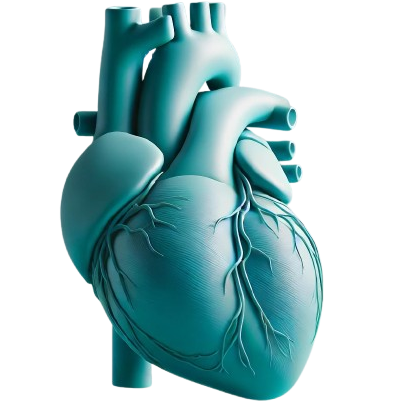3-Dimensional Imaging
What is 3D Heart Imaging?
3D heart imaging allows doctors to create detailed pictures of your heart that look more realistic than regular images. This helps them see the heart’s shape and how well it’s working—it's like watching a 3D movie of your heart! With 3D imaging, doctors can understand more about what’s happening inside the heart, making it easier to plan treatments or check for problems.
Who Needs 3D Heart Imaging?
This type of imaging is especially helpful for kids who:
- Were born with a heart condition.
- Might need surgery, so doctors can see exactly how the heart is shaped.
- Have heart valve problems that need a closer look.
- Need to check how well the heart is working to pump blood.
- Benefits of 3-Dimensional Imaging

3D imaging gives doctors a detailed view, which means they can:
- See more details than regular pictures, helping find any issues more easily.
- Plan surgeries with better accuracy so everything goes smoothly.
- Measure how well the heart pumps and works to ensure it’s healthy.
Types of 3-Dimensional Imaging
- 3D Echocardiogram: Uses sound waves to create images. A small device is placed on your chest or, in some cases, gently in your mouth to see your heart.
- Cardiac MRI: Uses magnets to create 3D images without any radiation. You lie on a bed that slides into the MRI machine.
- 3D Cardiac CT: Special X-rays are used to take detailed pictures of the heart. Sometimes, a dye is used to enhance the image.
Preparation Before a 3-Dimensional Imaging
- Follow instructions from the doctor, like avoiding food or drinks for a few hours if needed.
- Dress comfortably and avoid any metal (no jewellery).
- Stay relaxed: You might need to lie still; the team will help make you feel comfortable.
What Happens During a 3-Dimensional Imaging?
Depending on the type of scan:
- Preparation: You lie down, and sometimes sticky patches are placed on your chest to check your heart rate.
- Contrast Dye (if needed): For some scans, a safe dye may be given to help see the heart’s structures better.
- Imaging: The scan might take 15 minutes to an hour. You may hear a few sounds, and the team will monitor you carefully to ensure your comfort.
What to Expect After a 3-Dimensional Imaging?
After the test, you may be asked to drink extra water if contrast dye was used to help your body clear it out. Results are usually ready soon; your doctor will explain their meaning.
3-Dimensional Imaging Recovery Plan
3D imaging is safe and doesn’t usually require much recovery. Some tests use a little radiation, so your doctor will only do this if necessary. MRI scans don’t have radiation but might feel snug, so you can ask for help if you feel nervous.
Information on 3-Dimensional Imaging
Advancements in 3D heart imaging have been documented in various studies and resources:
- Research Articles:
- Three-dimensional echocardiography: This article discusses the development and clinical applications of 3D echocardiography in cardiac diagnostics.
- Cardiac Computed Tomography Angiography (CCTA): An overview of CCTA, its uses, and benefits in detecting coronary artery disease.
- Case Studies:
- 3D printing: The next dimension in cardiac imaging: This resource explores the use of 3D printing to understand complex cardiac anatomies, particularly congenital heart disease.
These resources provide valuable insights into the applications and benefits of 3D heart imaging in modern cardiology.

